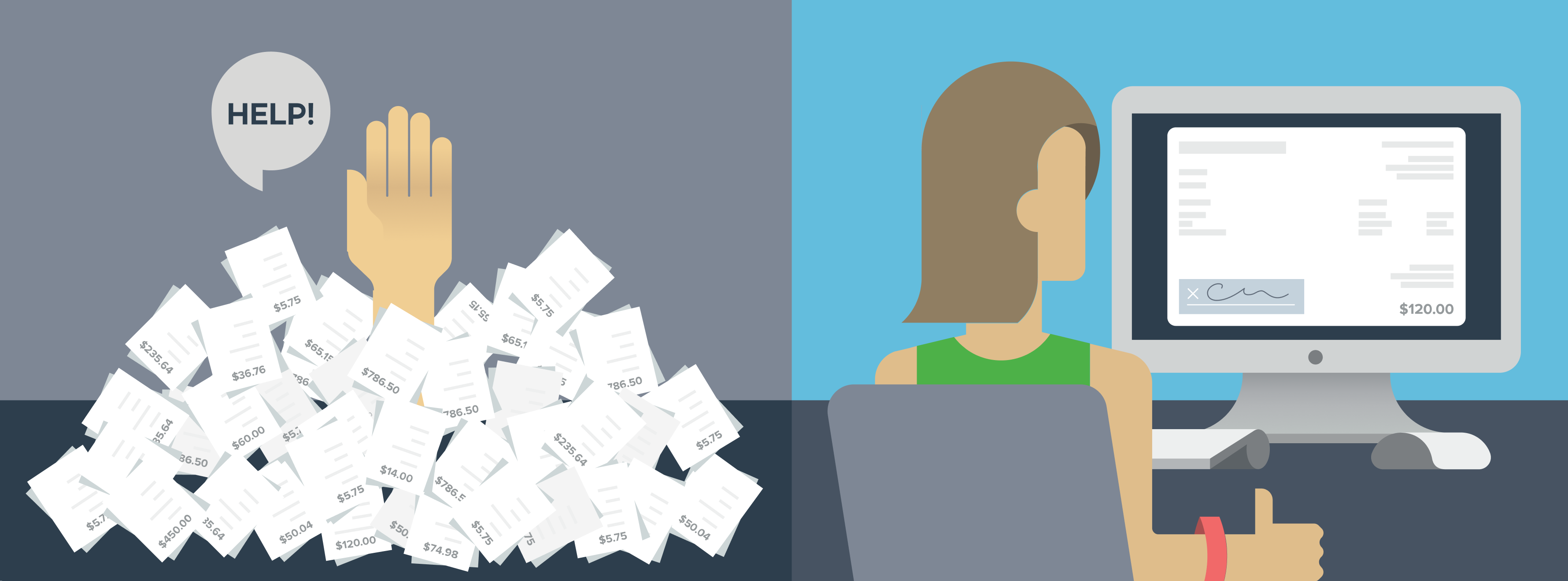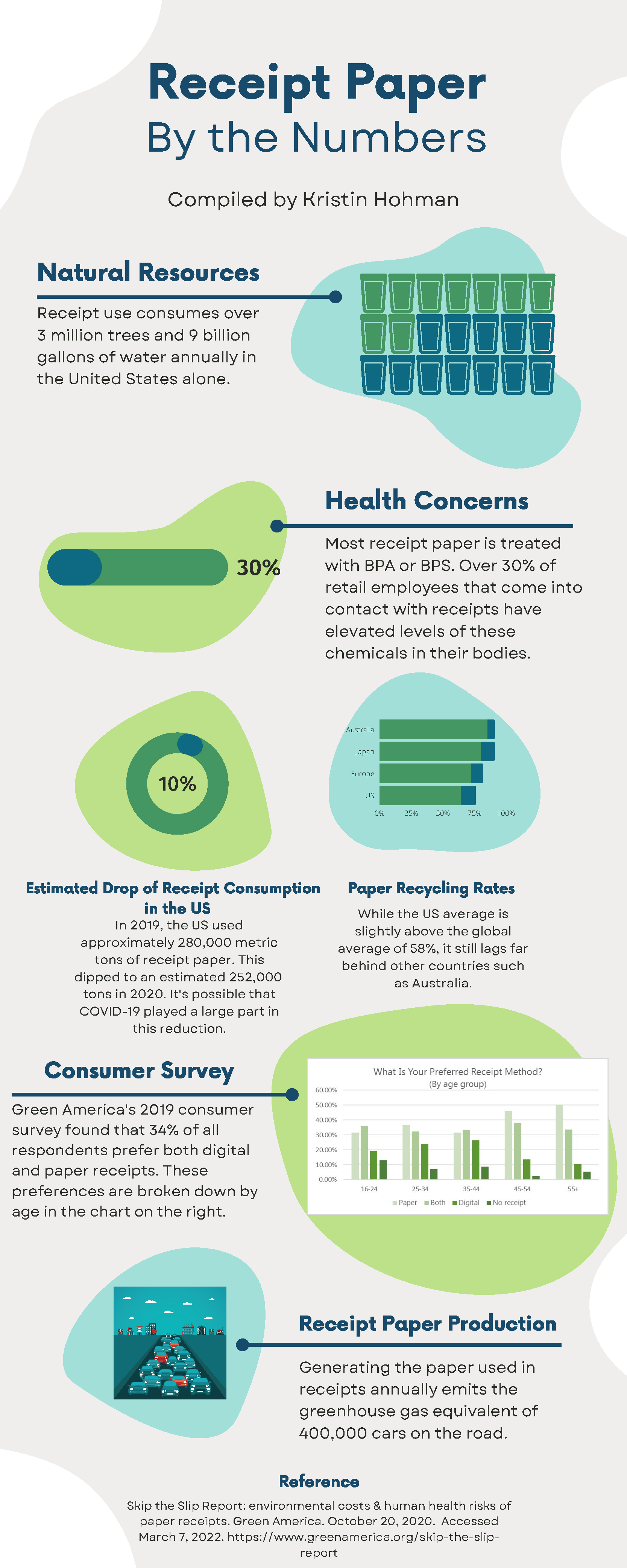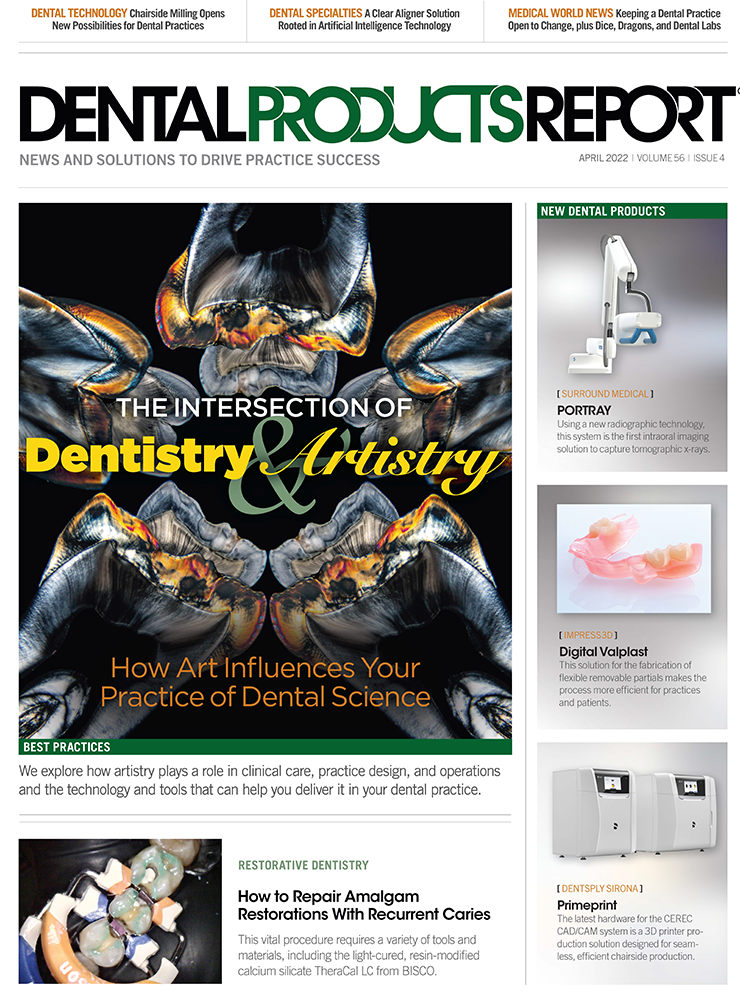The Environmental and Health Impacts of Paper Receipts and Invoices
How digital invoices and receipts save trees, reduce costs, boost productivity, and improve the patient experience.

Credit card receipts are a convenient proof of purchase for patients and practice administrators and are often filed with patient records to maintain transaction history. Printing, storing, and locating paper receipts is wasteful and expensive.
Environmentally speaking, paper receipts take a real toll on the environment. Green America’s Skip the Slip Report cites a study from Grand View Research estimating that the US consumed 280,000 metric tons of point-of-sale receipts in 2019, which required the wood of 3,630,000 trees.1 Annual greenhouse gas emissions produced from manufacturing thermal paper are the equivalent of emissions from over 400,000 cars.1
Worse yet, many receipts can’t be recycled because of the thermal paper they are printed on.1 Most thermal paper used for receipts is coated with bisphenol A (BPA) or bisphenol S (BPS), which allows the text to appear.1 Paper receipts expose staff and patients to these toxic chemicals, endocrine disruptors that seep into our bodies through skin contact and are linked to reproductive impairment, type 2 diabetes, thyroid conditions, and other health concerns.1
Paper receipts are costly. A box of paper rolls goes for $25 to $80 a case, depending on size. And storing receipts off-site can cost $50 to $300 or more per month. Beyond the cost of paper, there are time and labor costs associated with using an old-school, stand-alone payment terminal, requiring office staff to print each receipt to file with patient records, manually print batch reports, and tally totals to reconcile with the practice management system.
In addition to receipts, many dental practices still print and mail invoices to collect outstanding balances or to take payments for ongoing procedures and treatments. Paper invoices are inconvenient for customers and inefficient for your staff, and they negatively impact cash flow. Their global impact on the environment is astonishing. An estimated half-trillion paper invoices are sent annually, and that doesn’t take into account consumers mailing payments back to a business. According to Greencarrier, paper invoices are responsible for 10 percent of all trees cut down worldwide.2
Go Green: Digital Receipts and Invoices Are Good for the Environment and Your Practice

The way consumers pay evolved in 2020 with the adoption of contactless and digital payment methods in stores, restaurants, and service segments. As a result, patients expect similar digital-first experiences in how they pay for health care. Additionally, millennials and GenZers have made it clear that they are concerned about the environment and seek out businesses that adhere to sustainable, Earth-friendly practices.
Here are 4 ways to modernize your practice and do your part to protect the environment:
- Install a cloud-connected payment device: Upgrade to a payment solution in which everything is digital. Invoices are linked with patient contact information and payment details and are securely stored in the cloud. This eliminates the need to manually print, store, and retrieve paper records. You can search for a digital receipt with a few clicks using a patient’s name and transaction date, and email a copy directly to the customer.
- Create electronic invoices: Replace printing and mailing paper invoices with an invoice payment request via email. Patients simply open the email, tap on a “pay now” button, and enter payment details into a secure form. Include a description of procedures and attach an electronic copy of the invoice or supporting documentation.
- Collect payments from your website: Turn your website into a convenient place for patients to pay for services from their desktop, phone, or tablet. Add a “pay now” button to your website that directs visitors to a secure billing page featuring your brand where they enter their payment information. Hosted Checkout is a great option for patients who owe a balance after insurance claims have been paid.
- Set up automated recurring payments: Securely capturing and storing payment information associated with patient records makes it easy to collect one-time, installment, or recurring payments for multipart treatments and procedures.
Sustainability is good for the Earth, your staff, and your patients. Ditch the paper and go digital today.
References
- Skip the Slip Report: environmental costs & human health risks of paper receipts. Green America. October 20, 2020. Accessed March 7, 2022. https://www.greenamerica.org/skip-the-slip-report
- Ruisaho M. Why we switch to e-invoicing and how it benefits you. Greencarrier. November 7, 2014. Accessed March 7, 2022. https://lineragency.greencarrier.com/tag/benefits/

How Dentists Can Help Patients Navigate Unforeseen Dental Care
December 12th 2024Practices must equip patients with treatment information and discuss potential financing options before unexpected dental treatments become too big of an obstacle and to help them avoid the risk of more costly and invasive procedures in the future.